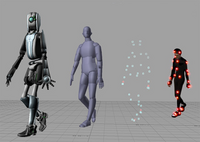
Photo from wikipedia
ABSTRACT Pedestrian simulation plays an important role in the fields of transport station management, building evacuation and safety management of large public events. Among the continuous pedestrian flow models, the… Click to show full abstract
ABSTRACT Pedestrian simulation plays an important role in the fields of transport station management, building evacuation and safety management of large public events. Among the continuous pedestrian flow models, the social force model is one of the most widespread and supports all of the above use cases. Since its initial proposal by Helbing and Molnar [(1995). Social force model for pedestrian dynamics. Physical Review E, 51, 4282], many improvements of the social force model have been put forward for solving various, but mostly specific, problems. However, an up-to-date and essentially comprehensive review bringing all the model variants into a common context is missing. In this paper, we propose such a framework in terms of assessment criteria for pedestrian models considering pedestrian attributes, motion base cases, self-organisation phenomena and some special cases. Starting with the initial version of Helbing and Molnar [(1995). Social force model for pedestrian dynamics. Physical Review E, 51, 4282] and the escape panic version of Helbing, Farkas, and Vicsek [(2000a). Simulating dynamical features of escape panic. Nature, 407, 487–490], we classify the improvements and assess their degree of the improvements. Further discussion is presented from the perspectives of description ability, parameter calibration and flexible application in a complex environment.
Journal Title: Transport Reviews
Year Published: 2018
Link to full text (if available)
Share on Social Media: Sign Up to like & get
recommendations!